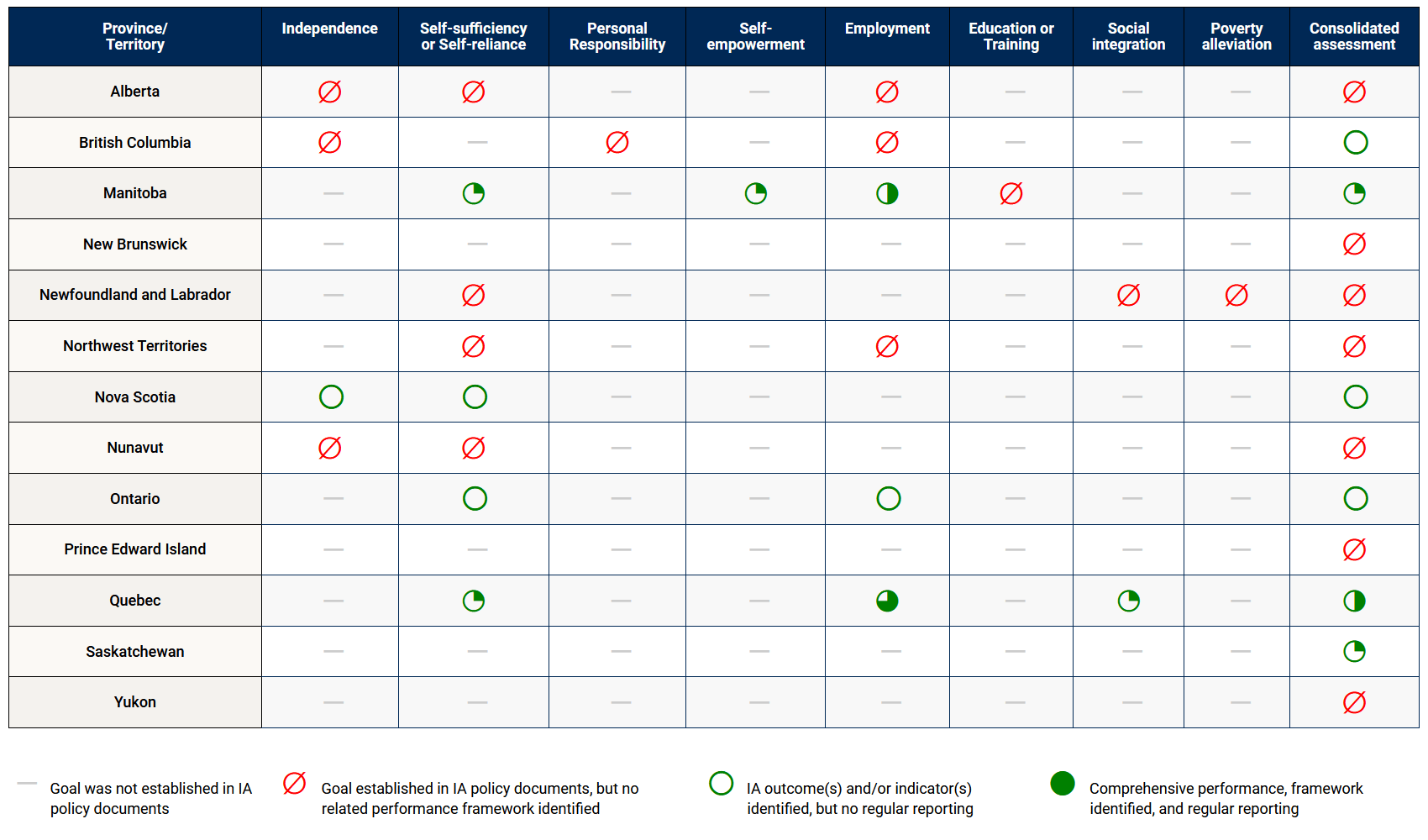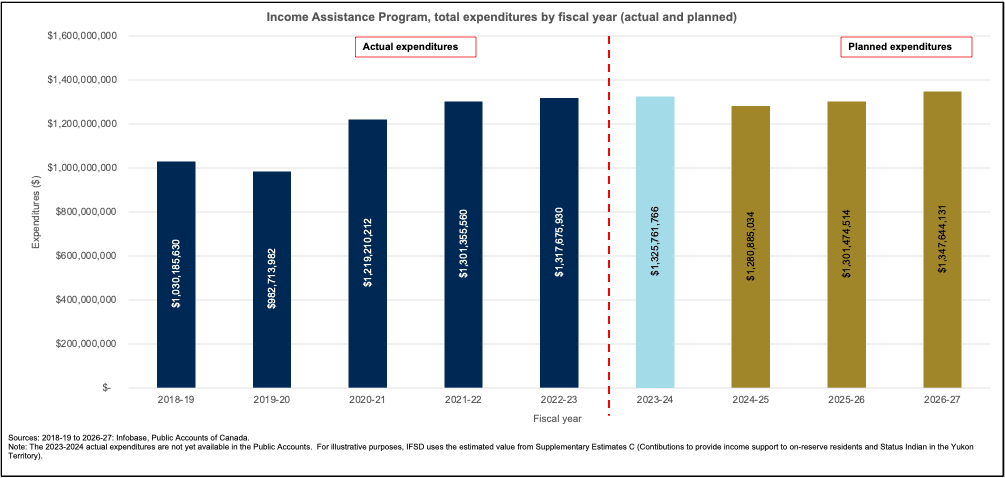September 2025
August 2025
July 2025
June 2025
Outreach to First Nations for Data Gathering
First Nation data and contributions are crucial to shape options for the reform of the Income Assistance (IA) program. Good data is necessary to understand how IA is working, how much it costs, what needs to change, and to empower First Nations and leadership for decision-making. As such, data from First Nations can be a powerful tool for analysis and a foundation for policy, advocacy, and accountability.
Public data on First Nations’ delivery of IA is limited. To address these information gaps and gather the data necessary to develop a dataset for program and cost analysis, IFSD has prepared a questionnaire and case study collaboration tools. IFSD’s previous work (e.g., First Nations Child and Family Services) would not have been possible without case study collaborations and working group support. By working with First Nations, IFSD will develop an evidence base with quantitative data to define context, complemented by qualitative data to give it meaning.
IFSD has started an outreach process to First Nations to encourage participation in the questionnaire and to confirm case study collaborators. The outreach process is arduous, as there is no record of which First Nations are delivering IA or how many people are receiving it. Collecting this data is thus a crucial step in understanding the cost drivers and beneficiaries of the Program.
To ensure the data obtained from the questionnaire and the resulting analysis are representative of the diversity of First Nations communities, IFSD is targeting a minimum number of participants in every province and territory (see Table 1).
Table 1
| Province/Territory | Target number of First Nations participants – Questionnaire |
|---|---|
| Alberta | 23 |
| Atlantic provinces | 10 |
| British Columbia | 101 |
| Manitoba | 32 |
| Northwest Territories | 14 |
| Ontario | 70 |
| Quebec | 20 |
| Saskatchewan | 35 |
| Yukon | 7 |
| Total | 312 |
IFSD encourages IA Managers in First Nations across the country to participate by providing data either by filling out the questionnaire or by becoming a collaborator. Together, we can build a dataset to ensure that First Nations perspectives and data guide the reform of the IA program.
Provincial/territorial findings
The on-reserve IA Program aligns with provincial/territorial regulations on key program parameters, including eligibility criteria, rates, and benefit coverage. Understanding the current context, cost drivers, and beneficiaries of IA thus requires an analysis of how each region administers its respective IA program(s). From this research, IFSD has found that:
Regional IA programs all share a similar philosophy: IA aims to serve as a transitional, last-resort support mechanism that combines financial benefits with employment requirements and assistance to promote recipients’ financial independence.
Beyond program objectives, each province and territory exhibits a uniquely specific and complex framework for IA, from eligibility criteria to coverage, rates, and performance measurement.
Each region sets specific and detailed eligibility criteria for IA. The programs all require recipients to be of majority age, reside in the province, and be in “financial need.” However, the definition and evaluation of financial need is unique to each jurisdiction. Regions typically apply income and/or asset limits below which claimants qualify for IA, but the types of resources included in these assessments and the exact thresholds are specific to each province/territory.
The benefits included in IA also vary across provinces/territories. IA programs typically include basic allowances for food, clothing, shelter, fuel and utilities as items of basic need. Each region then provides a detailed list of items of supplementary need, generally available on a discretionary basis and with specific conditions, rates, and eligibility criteria attached. Further analysis is necessary to understand differences in the breadth of coverage in each region.
IA rates are unique to each region. Recipients only receive the portion of income that they are missing to afford eligible expenses, based on the maximum IA rate offered. Importantly, no jurisdiction clarifies how maximum rates for basic assistance are determined. There is no apparent mechanism connecting these rates to the actual cost of living in each region (e.g., they are not based on regional poverty lines or indexed to inflation).
Table 2 summarizes the adequacy of regional IA performance frameworks against the objectives set in the provincial/territorial policy documents. An empty cell means that the region did not identify the associated goal in their IA policy documents. A red, empty ball signifies that the goal was established, but no performance framework was identified. A green, empty ball indicates that the province/territory has outlined performance indicators or outcomes measuring the program’s progress on the associated goal, but that the government does not regularly report progress. The more comprehensive the framework is (i.e., uses metrics that adequately measure the relevant objective) and the more regular reporting is, the fuller is the ball. A region with a comprehensive performance measurement framework and annual reporting practices has a fully green ball.
This analysis of program performance reveals a significant discrepancy between the objectives regional governments have set for IA and how program performance is actually assessed. More than half of the provinces/territories do not measure the performance of their respective IA program(s), or do not publish how performance is assessed. In the remaining half of the country, the metrics used are not adequate to capture whether IA fulfills its intended goal or are not regularly reported on. Importantly, none of the 13 jurisdictions examine the effectiveness of IA benefits for First Nations living on reserve specifically.
Overall, the data publicly available on IA programs is neither adequate nor sufficient to evaluate the effectiveness and efficiency of IA for Indigenous people living on reserve or the general population.
Table 2

Federal program expenditures and analysis
IFSD has surveyed publicly available information on expenditures and performance of the IA program. Figure 1 presents total federal expenditures on the IA program. IFSD found that:
Indigenous Services Canada’s (ISC) IA Program aims to relieve financial hardship and promote employment for on-reserve First Nations who have no other means of financial support, including Employment Insurance.
ISC is the main organization overseeing the IA Program. ISC Regions are the primary agencies responsible for the implementation of the program (funding allocation, compliance, monitoring and evaluation) while First Nation organizations oversee service delivery.
The IA Program aligns with provincial/territorial regulations on rates and eligibility criteria, resulting in substantial variations in program design across provinces and territories.
There are 10 audits and reviews of the IA Program, from 2009 to 2024. All converge on similar conclusions: the IA Program plays a crucial role in alleviating poverty on reserves, but suffers from structural, design, and implementation issues that prevent it from offering an effective and efficient solution to address long-term poverty and welfare dependency.
Figure 1 – Total federal expenditures on IA program

Indigenous Services Canada data request
Indigenous Services Canada (ISC) manages the Income Assistance (IA) program to relieve financial hardship and promote employment for on-reserve First Nations who have no other means of financial support. As such, ISC is the only source of detailed information on how IA Program resources are allocated. To understand IA Program spending and changes over time, that detailed information is useful. With detailed information, we can analyze spending by categories like province/territory or region, fiscal year, etc.
In November 2024, IFSD submitted a request for this information to ISC. The request remains outstanding. IFSD will provide an update and analysis once the information is received. If you’re interested in learning about how IFSD uses this information, see IFSD’s previous reports on First Nations Child and Family Services (FNCFS) (page 16-19) and First Nations not affiliated to an FNCFS agency (page 16-19).






